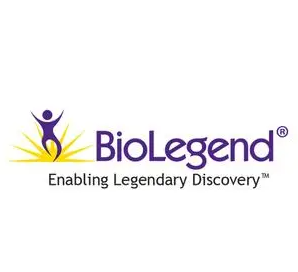1、订购使用抗体产品的客户,在使用产品过程中遇到问题,提出技术支持及其他请求时,我公司接到请求后的24个小时之内做出处理。
2、我公司的所有产品都经过严格的质检后上架销售,如经复核确实存在问题,本公司无条件退款或更换货。
3、所有书面反馈我们收到后48小时内给出答复。
Product Details
- Verified Reactivity
- Human, Cynomolgus, Rhesus
- Reported Reactivity
- African Green, Baboon
- Antibody Type
- Monoclonal
- Host Species
- Mouse
- Formulation
- Phosphate-buffered solution, pH 7.2, containing 0.09% sodium azide and BSA (origin USA)
- Preparation
- The antibody was purified by affinity chromatography, and conjugated with PE under optimal conditions.
- Concentration
- Lot-specific (to obtain lot-specific concentration, please enter the lot number in our Concentration and Expiration Lookup or Certificate of Analysis online tools.)
- Storage & Handling
- The antibody solution should be stored undiluted between 2°C and 8°C, and protected from prolonged exposure to light. Do not freeze.
- Application
-
FC - Quality tested
SB - Reported in the literature, not verified in house - Recommended Usage
Each lot of this antibody is quality control tested by immunofluorescent staining with flow cytometric analysis. For flow cytometric staining, the suggested use of this reagent is 5 ?l per million cells in 100 ?l staining volume or 5 ?l per 100 ?l of whole blood.
- Excitation Laser
- Blue Laser (488 nm)
Green Laser (532 nm)/Yellow-Green Laser (561 nm)
- Application Notes
Clone WM59 has been reported to recognize the D2 extracellular portion of CD31.
Additional reported applications (for the relevant formats) include: immunofluorescence microscopy2, immunohistochemical staining of acetone-fixed frozen tissue sections8, blocking of platelet aggregation3, and spatial biology (IBEX)11,12. Clone WM59 is not recommended for immunohistochemical staining of formalin-fixed paraffin-embedded sections. The Ultra-LEAF? purified antibody (Endotoxin < 0.01 EU/?g, Azide-Free, 0.2 ?m filtered) is recommended for functional assays (Cat. No. 303143 & 303144).
The purified WM59 antibody is useful as a capture antibody for a sandwich ELISA assay, when used in conjunction with biotin anti-human CD31 antibody (Cat. No. 536604) antibody as the detection antibody.- Additional Product Notes
Iterative Bleaching Extended multi-pleXity (IBEX) is a fluorescent imaging technique capable of highly-multiplexed spatial analysis. The method relies on cyclical bleaching of panels of fluorescent antibodies in order to image and analyze many markers over multiple cycles of staining, imaging, and, bleaching. It is a community-developed open-access method developed by the Center for Advanced Tissue Imaging (CAT-I) in the National Institute of Allergy and Infectious Diseases (NIAID, NIH).
- Application References
(PubMed link indicates BioLegend citation) -
- Schlossman S, et al. Eds. 1995. Leucocyte Typing V Oxford University Press. New York.
- Muczynski KA, et al. 2003. J. Am. Soc. Nephrol. 14:1336. (IF)
- Wu XW, et al. 1997. Arterioscl. Throm. Vas. 17:3154. (Block)
- Nagano M, et al. 2007. Blood 110:151. (FC) PubMed
- MacFadyen JR, et al. 2005. FEBS Lett. 579:2569. PubMed
- Yoshino N, et al. 2000. Exp. Anim. (Tokyo) 49:97. (FC)
- Sestak K, et al. 2007. Vet. Immunol. Immunopathol. 119:21.
- Wicki A, et al. 2012. Clin. Cancer Res. 18:454. (FC, IHC) PubMed
- Oeztuerk-Winder F, et al. 2012. EMBO J. 31:3431. (FC) PubMed
- Bushway ME, et al. 2014. Biol Reprod. 90(5): 110 (IF) PubMed
- Radtke AJ, et al. 2020. Proc Natl Acad Sci USA. 117:33455-33465. (SB) PubMed
- Radtke AJ, et al. 2022. Nat Protoc. 17:378-401. (SB) PubMed
- Product Citations
-
- RRID
- AB_314331 (BioLegend Cat. No. 303105) AB_314332 (BioLegend Cat. No. 303106)
Antigen Details
- Structure
- Ig superfamily, type I transmembrane glycoprotein, 130-140 kD
- Distribution
-
Monocytes, platelets, granulocytes, endothelial cells, lymphocyte subset
- Function
- Cell adhesion, signal transduction
- Ligand/Receptor
- CD38
- Cell Type
- Endothelial cells, Granulocytes, Lymphocytes, Monocytes, Neutrophils, Platelets
- Biology Area
- Angiogenesis, Cell Adhesion, Cell Biology, Immunology, Neuroinflammation, Neuroscience
- Molecular Family
- Adhesion Molecules, CD Molecules
- Antigen References
-
- DeLisser H, et al. 1994. Immunol. Today 15:490.
- Newman P, 1997. J. Clin. Invest. 99:3.
- Fawcett J, et al. 1995. J. Cell Biol. 128:1229.
- Gene ID
- 5175 View all products for this Gene ID
- UniProt
- View information about CD31 on UniProt.org








